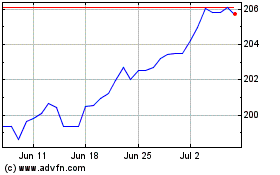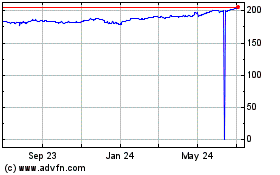UK Economy Logs Biggest Contraction Since 1955
August 12 2020 - 3:03AM
RTTF2
The UK economy contracted at the fastest pace on record in the
second quarter amid the coronavirus pandemic, despite signs of
recovery taking hold in June after the relaxation of restrictions
on movement.
Gross domestic product contracted by 20.4 percent sequentially
in the second quarter, following a 2.2 percent drop in the first
quarter, the Office for National Statistics reported Wednesday.
With the second consecutive fall, the economy has entered a
technical recession. The latest fall was the biggest contraction
since the records began in 1955. Economists had forecast a
quarterly fall of 20.5 percent.
"It is clear, that the UK is in the largest recession on
record," the ONS said.
Second quarter GDP was 22.1 percent below the final three months
of 2019, which is more than three times greater than the total fall
during the next largest period of recession, which occurred during
the global economic downturn of 2008 to 2009, the statistical
office added.
"Today's numbers show that hard times are here," Chancellor
Rishi Sunak told BBC. He expects many more people to lose their
jobs.
"Although tough decisions lie ahead, we will get through this
and nobody will be left without hope or opportunity," Sunak
added.
Latest ONS estimates show that the UK economy is now 17.2
percent smaller than it was in February, ahead of the Covid-19
outbreak.
On a yearly basis, GDP plunged 21.7 percent in the second
quarter but smaller than the economists' forecast of 22.4
percent.
As the full scale of the fallout in unemployment has yet to be
felt and as GDP may take 12-18 months to climb back to its
pre-coronavirus level, it's going to feel like a recession for a
long time yet, Paul Dales, an economist at Capital Economics,
said.
The UK economy is likely to experience a decent rate of growth
during the third quarter, but importantly it will be at least a
couple of years before all of the lost ground is recovered, James
Smith, an ING economist, said.
Consumer caution, the unwinding of the Job Retention scheme and
the end of the post-Brexit transition period pose risks to the
recovery, Smith noted.
There have been record quarterly falls in services, production
and construction output in the second quarter. Services output
decreased 19.9 percent and production output fell 16.9 percent.
Construction output contracted more sharply, by 35.0 percent.
Private consumption accounted for more than 70 percent of the
fall in the expenditure measure of GDP in the second quarter,
falling by a record 23.1 percent. Gross fixed capital formation
declined 25.5 percent and business investment was down 31.4
percent. Meanwhile, government consumption advanced 14.1
percent.
The UK logged a trade surplus of 4.0 percent of GDP in the
second quarter, data showed.
In June, the monthly GDP growth accelerated to 8.7 percent from
2.4 percent in May. All sectors posted faster growth, with
construction registering the biggest increase of 23.5 percent.
The dominant service sector grew 7.7 percent in June. At the
same time, production advanced 9.3 percent and manufacturing gained
11 percent. Farm output climbed 2.7 percent.
The economy began to bounce back in June with shops reopening,
factories beginning to ramp up production and housebuilding
continuing to recover, ONS Deputy National Statistical for Economic
Statistics Jonathan Athow said. Despite this, GDP in June still
remains a sixth below its level in February, before the virus
struck, Athow added. In June, the visible trade deficit widened as
the increase in imports far exceeded the rise in shipments. The
visible trade gap rose to GBP 5.12 billion from GBP 1.76 billion in
May, the ONS said in a separate release.
Exports and imports of goods climbed 6.9 percent and 18.8
percent, respectively.
Consequently, the total trade surplus declined to GBP 5.34
billion from GBP 7.66 billion a month ago.
Another report from the ONS showed that labor productivity
posted its biggest fall on records in the second quarter. Labor
productivity decreased 2.5 percent on quarter.
Reflecting the impact of the furlough scheme, output per worker
plunged 19.9 percent from the first quarter.
Sterling vs Yen (FX:GBPJPY)
Forex Chart
From Mar 2024 to Apr 2024

Sterling vs Yen (FX:GBPJPY)
Forex Chart
From Apr 2023 to Apr 2024
